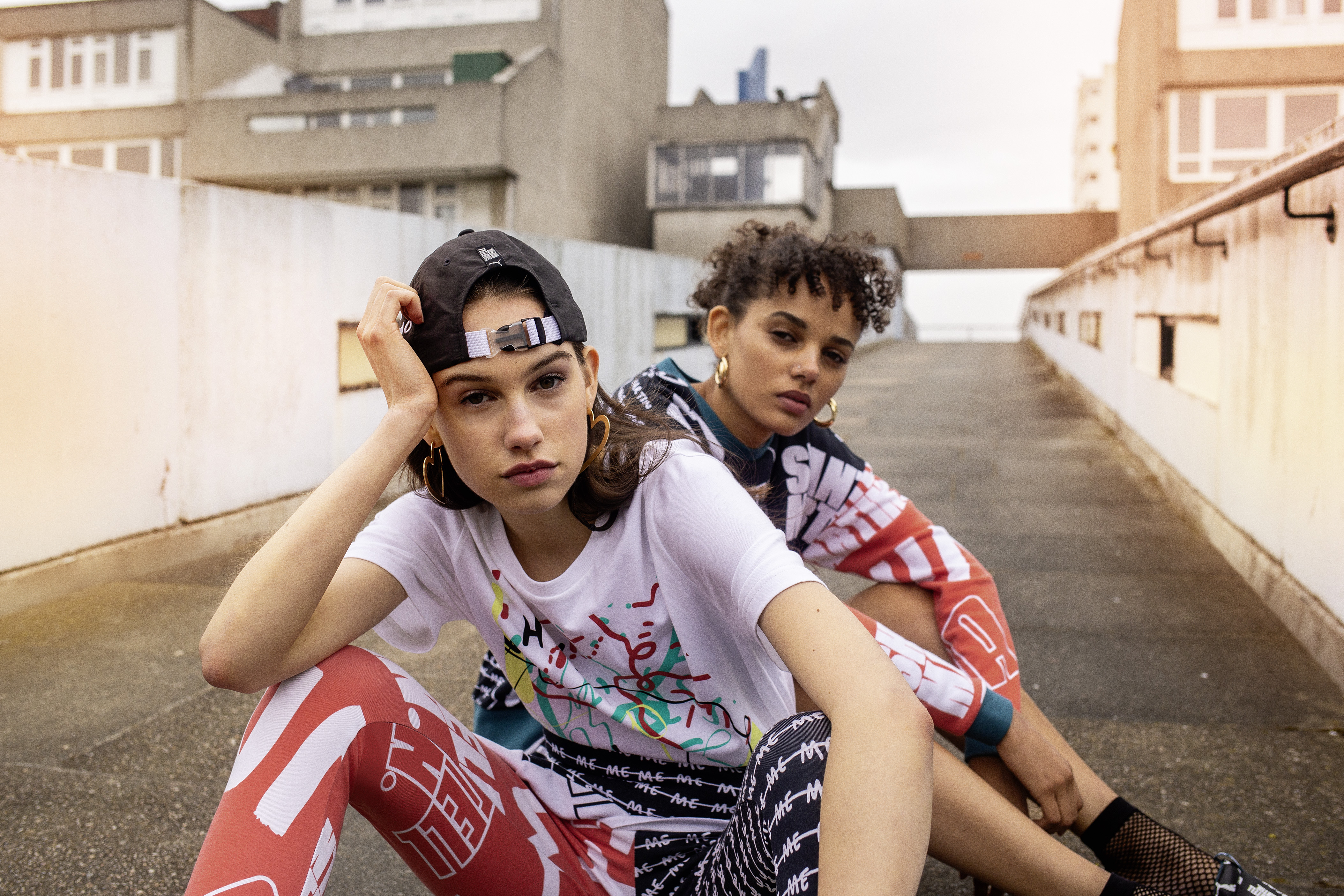Artist Shantell Martin returned to her southeast London roots to shoot the latest edition of her collaboration with Puma. Thamesmead, the district’s sprawling housing area where she grew up, provided the backdrop for the campaign. In an e-mail announcing the collection’s release, the artist described her childhood setting as “a big fun playground,” but she noted how her younger self “had a sense of the limitations such an environment can create.”
She also took issue with the cultural appropriation that brands have adopted through their advertising and marketing. “I do believe it’s not cool or fashionable, nor healthy to grow up in an environment that is full of violence, drugs, poor education, untreated mental illness and an abundance of unhealthy examples of bad relationships. All this being said, over the years car companies, movie directors and fashion brands flock to such areas to dip into that which they are not or would wish to be. The appropriation of communities and people stuck in poverty still occurs and this has always frustrated me…the glamorization of communities that lack the common human needs to excel in life only helps to perpetuate the problem,” she wrote. “That’s why when I created this third collection with Puma, I knew it had to be shot there…because it is a part of my story and this collection is inspired by growing up in London on Thamesmead and my youth.” As for those who might think Martin is also a perpetuator through the Puma campaign, she said in a phone interview, “On one hand, you can say that I’m perpetuating it shooting this collection. But on the other hand, I’m going in and being a role model. I’m being seen by my family members who are growing up in the same environment that I did. Now, instead of it being some film or company just coming in and then leaving, now they have a connection to me coming in and shooting my product. ‘Hey, I’m relating to this person, there is a way out or a way of coming back,’ supporting the area creatively in different ways.”
Through her ties to Thamesmead, including relatives living there, Martin said her biannual visits remind nieces and nephews “that that’s not where it begins and ends.” Now home to 45,000, Thamesmead is on the cusp of a major renovation project. (Some know Thamesmead from Stanley Kubrick’s 1971 film “A Clockwork Orange.”)
While Martin’s first Puma collaboration was black-and-white, in keeping with her graphic art style, the second drop was more transitional with infusions of blue and other colors. That led to this third and final collection, which was inspired by the artist’s London upbringing, when shell suits and interesting clothing with triangles, squares and patterns were en vogue. Her latest T-shirts, sweatshirts, tights and sneakers for Puma are meant to hail back to the city’s rave and club scene from her adolescence and also hint at her future self, she said. Martin, who is now based in Jersey City, N.J., has had strong convictions about her former British stomping grounds. As an art school student 16 years ago, she penned an essay, “Thamesmead: The Evolving Identity of a Southeast London Council Estate.” (A note of authenticity that was reminded to recipients of Monday’s Puma-related news.) Earlier this month, Martin attended Russell Westbrook’s “Summer Hype House Party,” featuring his Oklahoma Thunder teammate Paul George and rapper Nas in Oklahoma City. In a couple of weeks, Puma will open a two-week pop-up shop and presentation for Martin’s collaboration on lower Broadway south of Canal Street. In early October, she will stage a gallery show and talk through a residency at 92Y that will include a dance collaboration. Martin will teaching an ITP graduate program at New York University’s Tisch School of the Arts this fall. In January, she plans to announce a new art project. And in fall 2019, the Denver Art Museum will showcase her work.

